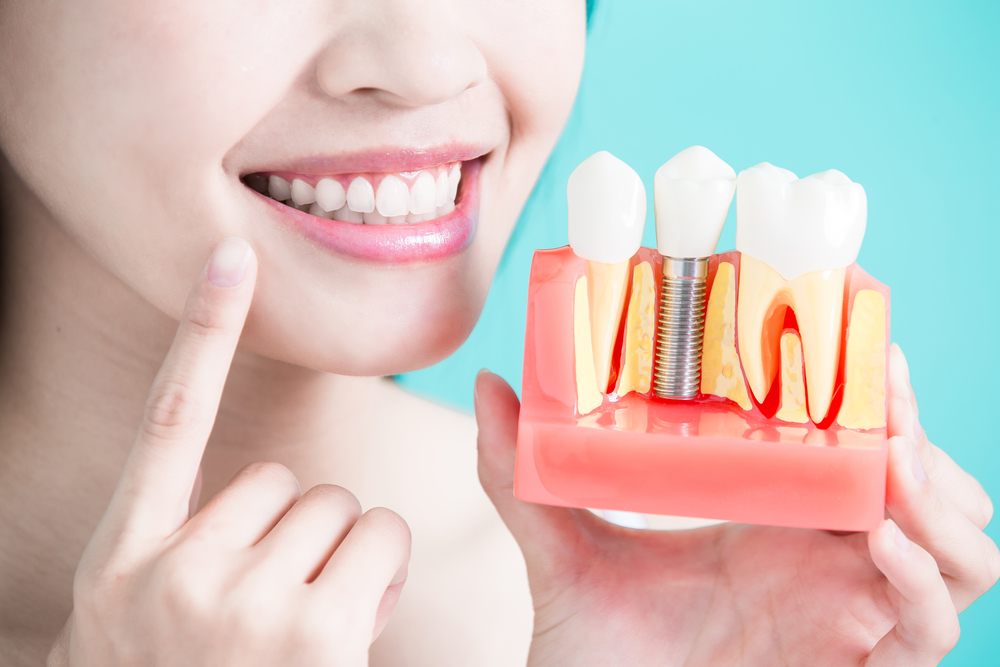Your Consultation and Examination
Before commencing your treatment, Dr. Latif and our team prioritize understanding your unique dental needs. During the initial consultation, our experienced dental professionals will thoroughly examine your oral health, including taking X-rays, to assess bone density and identify any potential issues. This imaging helps our Columbus implant dentist create a personalized treatment plan tailored to your requirements.
Our Columbus implant dentist offers several dental implant options to help our patients find the right solution for their needs, including the following:
Treatment Planning and Customization
Once we’ve gathered all the necessary information, our team will devise a comprehensive treatment plan. Dr. Latif will discuss this plan with you, addressing any questions and providing materials to educate you about the dental implant process, preparation, and aftercare. The dental implant process at Keep Smiling Columbus is customized to suit your individual oral health needs, ensuring optimal results.
Tooth Extraction (If Required)
In cases where a damaged or decayed tooth needs replacement with an implant, tooth extraction might be necessary. Our Columbus dentist can perform extractions with utmost care to ensure a smooth transition to the dental implant process.
Bone Grafting (If Required)
For successful dental implant placement, adequate bone density is crucial. If your jawbone lacks the necessary support, bone grafting can strengthen the area. This procedure ensures a sturdy foundation for the implant and enhances the longevity of your dental restoration.
Dental Implant Placement
The actual dental implant placement is a meticulous procedure performed by Dr. Latif. After administering dental sedation or a local anesthetic, he’ll surgically implant a titanium post into the jawbone, serving as the artificial tooth root.
Healing Period (Osseointegration)
After the dental implant placement, a crucial healing period follows. The titanium implant’s biocompatibility allows it to fuse with the jawbone over time in a process called osseointegration, creating a secure and natural-feeling foundation for the restoration. Osseointegration usually takes a few months, and our team will monitor your progress closely to ensure everything proceeds as planned.
Tips for Proper Healing During Osseointegration
Ensuring proper dental implant osseointegration is vital for the long-term success of your dental implants. Osseointegration is the process of the implant fusing with the jawbone, creating a stable and durable foundation for the artificial tooth. Here are some essential tips to promote successful osseointegration:
- Choose a Skilled and Experienced Implant Dentist: The first step in ensuring proper osseointegration is to select a skilled and experienced implant dentist like Dr. Latif. A qualified professional will assess your oral health, bone density, and overall suitability for dental implants. Their expertise plays a significant role in achieving successful osseointegration.
- Maintain Good Oral Hygiene: Before and after the implant procedure, it’s crucial to maintain excellent oral hygiene. Brush your teeth twice daily, floss regularly, and use an antibacterial mouthwash to keep your mouth clean and free from harmful bacteria.
- Avoid Smoking and Tobacco Products: Smoking and tobacco use can hinder healing and reduce blood flow to the surgical site. It’s best to quit smoking and avoid tobacco products to reduce your chances of complications as you heal.
- Follow Post-Surgery Instructions: After dental implant surgery, Dr. Latif will provide specific post-surgery instructions. Adhering to these guidelines, such as avoiding hard foods, maintaining a soft diet, and taking prescribed medications, will facilitate proper healing and osseointegration.
- Attend Follow-up Appointments: Regular follow-up appointments at our Columbus implant dental office are essential. These visits allow us to monitor your progress and identify potential issues early, ensuring timely intervention.
- Avoid Excessive Pressure on the Implants: Avoid putting excessive pressure on the implant area during the initial healing period. Refrain from chewing on hard objects or using the implant site to crack nuts or open bottle caps.
- Maintain a Balanced Diet: A balanced diet rich in vitamins and minerals contributes to better overall oral health and aids in the healing process. Consuming nutrient-rich foods supports osseointegration and the longevity of your dental implants.
- Protect Your Implants: If you participate in activities that could risk damaging your dental implants, such as contact sports, wear a mouthguard or protective gear to safeguard your investment.
- Address Concerns Promptly: If you experience any discomfort, swelling, or abnormal symptoms around the implant site, contact your dentist immediately. Promptly addressing concerns can prevent potential complications and promote successful osseointegration.
Abutment Placement
Once osseointegration is complete, an abutment is placed on the dental implant. The abutment acts as a connector between the implant and the dental restoration. It’s essential for proper alignment and stability.
Final Restoration Placement
The final stage of the dental implant process involves placing the restoration on the abutment. These restorations are usually dental crowns or bridges meticulously crafted to blend seamlessly with your natural teeth, both in appearance and function. Once it’s in place, you can enjoy a fully restored, beautiful smile.

